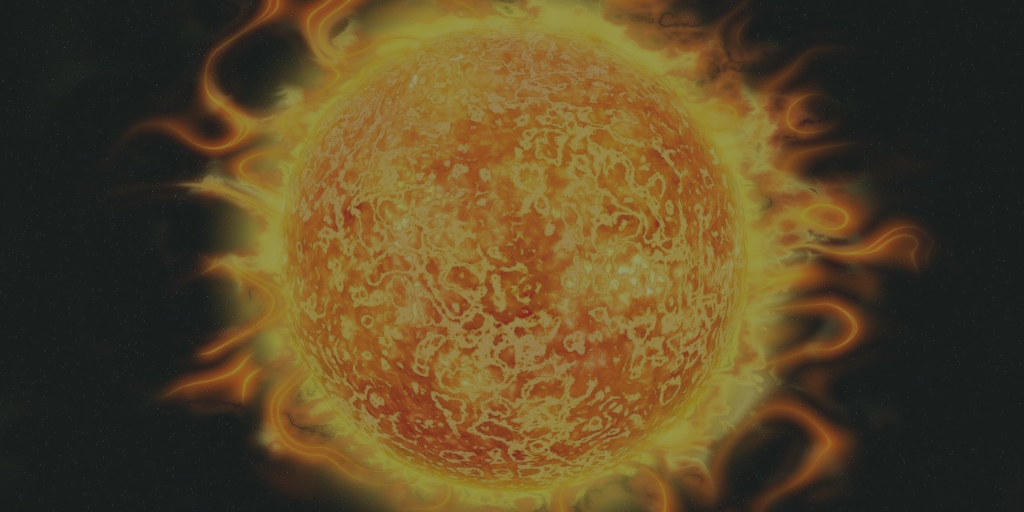The world will face a severe energy shortage in the future because of the high demand to support billions of people and the shortage of fossil fuels. Renewable resources like wind and solar energy are volatile and weather dependent.
To meet the increasing demand, alternative sources of clean, low-cost energy are required. This is a big challenge for governments around the world and the industry. Fusion has the potential to provide an always available, environmentally benign, and well-distributed energy solution. Progress in fusion energy is accelerating over the last few decades as both government and private sectors have started investing in this sector.
What is Fusion?
Fusion is a nuclear reaction in which two or more atomic nuclei combine to form one or more different atomic nuclei and often subatomic particles. The Fusion of light elements releases energy due to the interplay of two opposing forces: the strong nuclear force, which holds protons and neutrons together in the nucleus, and the Coulomb force, which causes positively charged protons to repel each other.
Fission and Fusion, What is the Difference?
Fission and Fusion are two physical processes that can generate massive energy from reactions between atoms. Nuclear Fusion is a reaction between two or more nuclei of atoms to fuse and form different atomic nuclei. This reaction results in the release of energy; this is the natural phenomenon in the sun to produce its energy. The energy produced by these nuclear reactions is millions of times more than other sources of energy.
Fusion is considered superior to fission as the amount of energy produced by Fusion is far greater than the fission reaction. The primary difference between these two types of reactions is explained here:
A fusion reaction occurs in the sun by combining isotopes of hydrogen called Deuterium and Tritium under immense atmospheric pressure and extremely high temperatures. This combination forms a new element with a higher atomic number, and also a massive amount of energy is released.
Deuterium + Tritium = He + n + Energy
On the other side, nuclear fission is the splitting of a massive nucleus into different subatomic particles. In a typical fission reaction, Uranium is involved.
23592U + n = 23692U
followed by
23692U = 14456Ba + 89 36Kr + 3n + Energy
After both fusion and fission reactions, the newly formed resultants’ mass is less than the total mass before the reaction.
Basics of Fusion Reaction and Fusion Reactors, is it Feasible?
There is a need for a high-temperature environment for a fusion reaction to occur, the same as found in the sun or other stars. Hydrogen atoms fuse to form helium and energy. Hydrogen is heated at high temperatures, and that changes this into plasma, where electrons are separated from the nuclei.
Such conditions can occur when the temperature increases, causing the ions to move faster and eventually reach speeds high enough to bring the ions close together. The nuclei can then fuse, causing a release of energy. To produce and sustain these high temperatures requires special containers.
Most experimental nuclear reactors use a donut-shaped design called a tokamak. These machines use powerful magnetic fields to confine cloud and plasma or ionized gas at extreme temperatures so atoms can fuse. This fusion reaction produces a lot of heat, which would generate steam, and the steam would then drive turbines or generators. It is highly compatible with our existing power systems.
Fusion power plants could be one-to-one replacements for fossil fuel plants, without any need to restructure electrical grids for them. Other energy sources such as solar and wind are not accommodated well by the current design of electric grids. Fusion energy is also safe as runaway incidents like Chernobyl and Fukushima are not possible. Because when the energy stream is used to heat and speed, the nuclear reaction is stopped, the process stops. The nuclear waste produced is far less than that of fission reaction and has a half-life of a few hundred years.
Helium-3 Vs. Tritium
As mentioned, the isotopes of hydrogen (deuterium (H-2) and tritium (H-3)) are used as fuel for fusion reactions. Some benefits of fusion reactions are, Fusion does not produce greenhouse gases such as carbon dioxide, which drives global warming, nor does it generate other pollutants. And the fuel for Fusion, such as the element hydrogen, is plentiful enough on Earth to meet all of humanity’s energy needs for millions of years. Both of these isotopes are found in ordinary water. However, technological development for efficient and low-cost solutions keeps the researchers busy to find new solutions. Using hydrogen isotopes deuterium and tritium for fusion reaction has a disadvantage, that it produces neutrons. If Helium-3 is used, it offers a remarkable advantage, and its Fusion with deuterium is more efficient than deuterium-tritium. More energy is produced with less waste, i.e., is no neutrons are generated. Helium-3 is non-radioactive and would not produce any dangerous waste.
Mining the Moon
Sun dispense a large amount of Helium-3, but the Earth has an atmospheric shield that does not allow it. On the other hand, the Moon shows no such resistance to helium-3 and has millions of tons of helium-3 on its surface.
Now the goal is to mine the Moon and gather Helium-3 for fueling future fusion reactors. Europe, India, and China are actively working on ideas about extracting Helium-3 from the Moon. Their governments are planning to launch new programs and implement legislations to participate in this race of moon mining actively. NASA is already planning a lunar Gateway — a spacecraft with living quarters, research laboratories, and docking points for spaceships — that will orbit the Moon and provide access to the lunar surface.
Many technologies like remote sensing, Visible Imaging, Neutron Spectrometer, Lunar Reconnaissance Orbiter, Cosmic Ray Telescope for the Effects of Radiation (CRaTER), and more have been developed for moon mining operations.
Robots for Lunar Exploration
Robotics also plays a critical role in all space explorations, including moon mining. Robots are used in services like construction, maintenance, surveillance, exploration, etc., in space missions. Robotics are connected to multiple other technologies and emerging fields to contribute to space exploration and engineering.
Robotics and remote handling technologies significantly improve human’s ability and help to cross the limitations. Two important attributes of robotics that are essential are locomotion and autonomy. A robot for space-based applications must be designed to have locomotion to manipulate grip, rove, and drill, etc. Its autonomy can make it a human proxy to conduct various tasks using teleoperations.
These autonomous systems reduce the load from humans and execute the tasks more effectively and timely. To meet the long-term need for exploration and science, various robotic mission concepts need to be brought, and research efforts are required from both academia and industry. The future of space explorations will bring even larger goals and require space robots with diverse locomotion and autonomy.
Who Will Mine the Moon
Previously the government agencies were the main stakeholders in space explorations, but now commercial enterprises are getting involved and have shown great interest in this area. These enterprises are also investigating and developing technologies to exploit the resources of the Moon. Names like Moon Express, Deep Space Industries, and Planetary Resources are working toward the long-term goal of exploiting the key elements in the Moon and beyond. In the more distant future, the mining of helium-3 from the Moon and elsewhere could provide valuable fuel for fusion reactors.
Fusion energy, with its connection to space exploration and mining, is attracting government and private sectors. In addition to the USA and China, Luxembourg is also taking part in the race by setting up a fund for space mining companies to open offices in the country and make it the hub of space mining innovation. Similarly, the United Arab Emirates is making a multipronged effort to establish a space mining industry, with a billion dollars investment. Several commercial initiatives have started for asteroids and the Moon, by Planetary Resources, Deep Space Industries, Google Lunar X-Prize, Lunar Missions Ltd, Moon Express, etc. To conduct a state of the art research in space mining for the nuclear fusion industry is essential.
As mentioned in the article, Fusion hopes to produce power at an economical cost and manufacture a system that can replace the fossil fuel-based power systems. There is a strong need to find cost-effective ways for moon mining, extracting the helium-3, and transporting back to Earth. This could help us transform the energy sector forever.

